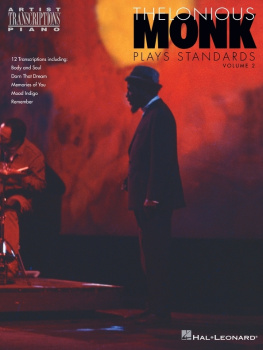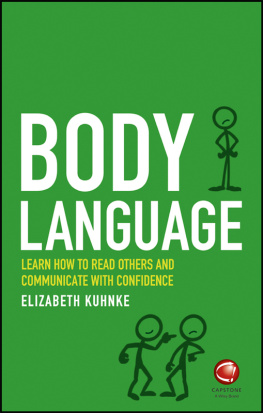Simon Roberts - The Power of Not Thinking: How Our Bodies Learn and Why We Should Trust Them
Here you can read online Simon Roberts - The Power of Not Thinking: How Our Bodies Learn and Why We Should Trust Them full text of the book (entire story) in english for free. Download pdf and epub, get meaning, cover and reviews about this ebook. year: 2022, publisher: Rowman & Littlefield Publishers, genre: Religion. Description of the work, (preface) as well as reviews are available. Best literature library LitArk.com created for fans of good reading and offers a wide selection of genres:
Romance novel
Science fiction
Adventure
Detective
Science
History
Home and family
Prose
Art
Politics
Computer
Non-fiction
Religion
Business
Children
Humor
Choose a favorite category and find really read worthwhile books. Enjoy immersion in the world of imagination, feel the emotions of the characters or learn something new for yourself, make an fascinating discovery.

- Book:The Power of Not Thinking: How Our Bodies Learn and Why We Should Trust Them
- Author:
- Publisher:Rowman & Littlefield Publishers
- Genre:
- Year:2022
- Rating:3 / 5
- Favourites:Add to favourites
- Your mark:
The Power of Not Thinking: How Our Bodies Learn and Why We Should Trust Them: summary, description and annotation
We offer to read an annotation, description, summary or preface (depends on what the author of the book "The Power of Not Thinking: How Our Bodies Learn and Why We Should Trust Them" wrote himself). If you haven't found the necessary information about the book — write in the comments, we will try to find it.
Details the role our body plays in how we learn and how we can tap into our bodys knowledge to excel in all facets of life.
Ask someone to point to the part of their body responsible for their intelligence and it is highly likely that they will point at their head. This assumption is understandable, given that, for centuries, from Descartes cogito ergo sum to the computer age, this is what we have been told to think.
And yet we all share common experiences that have revealed the incomparable power of not thinking. Have you ever struggled to remember your pin number only to hold your fingers out and type it correctly with your hands, played the piano without focusing on remembering the correct notes or listened to your gut feeling when under the pressure of a big decision? All these instances prove that it is time to stop neglecting the role the body plays in our acquisition of knowledge and to explore how it is that brain and body combine to deliver what we view as uniquely human intelligence. You never forgot how to ride a bike did you?
In this unique new book, social and business anthropologist Simon Roberts looks at the pivotal role that our body plays in how we learn and reminds us of why we should learn to listen to it more often. Drawing upon an incredible range of cutting-edge science, real-life examples and personal experience, Roberts explores the complexity of even the simplest of tasks that humans perform every day and goes on to explain how, with a greater awareness of the processes at work, we can tap into our full potential and excel in any area of our lives.
His proposition isnt the antidote to big data, cold rationalism, and reductionism. But, as embodied knowledge emerges from our engagement and interaction with the world, the author underlines why intelligence does not solely reside in our brains. If theres a single, practical message to be taken from it, it is that we should give more credit to the role of the body as a resource for learning about and understanding the world. That means a more sleeves rolled up, engaged and practical way of learning by doing not by rational detachment.
Simon Roberts: author's other books
Who wrote The Power of Not Thinking: How Our Bodies Learn and Why We Should Trust Them? Find out the surname, the name of the author of the book and a list of all author's works by series.








